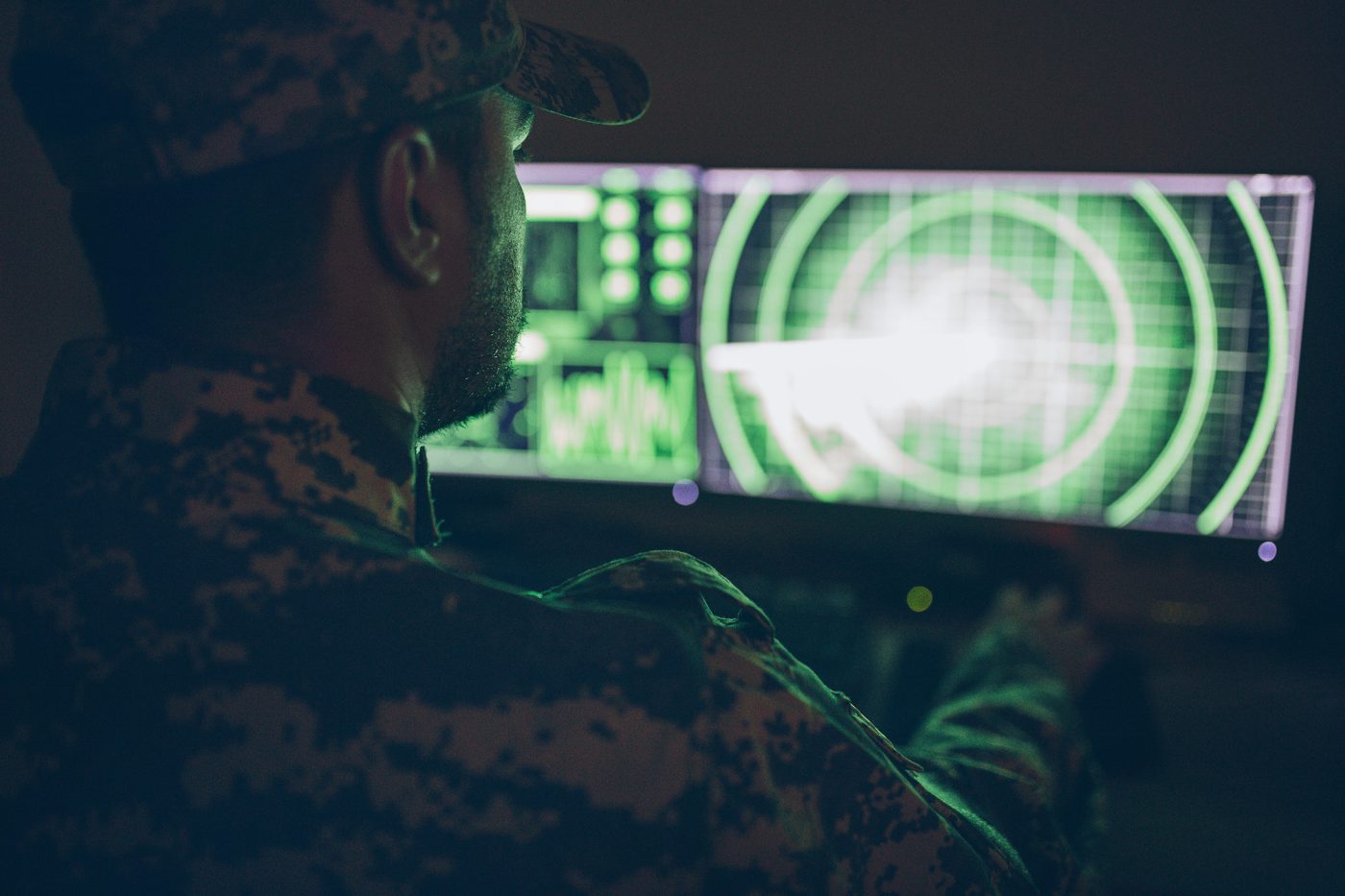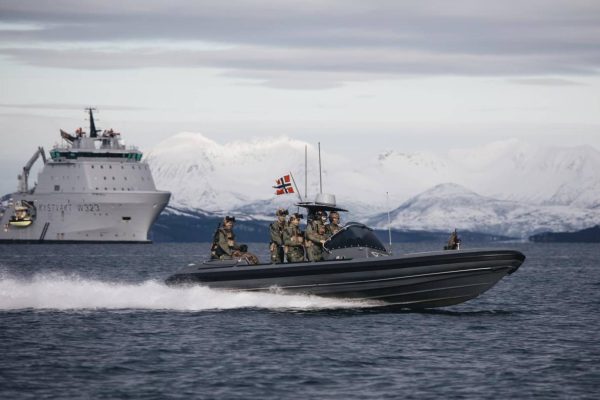Space technology has played such a transformational and public role in Russia’s war against Ukraine, that it might be tempting for the international community to think of the conflict as the world’s first space war.
After all, the Russian military conducted a kinetic direct-ascent, anti-satellite weapons test just weeks before launching its all-out invasion against Ukraine. The Kremlin also unleashed a malicious cyberattack against American satellite communications provider Viasat — a vital service for Ukraine’s military command and control — just an hour before the full-scale invasion began.
Meanwhile, geospatial imagers launched by commercial firms like Maxar and Planet have been significant in fostering public understanding of events on the ground, while capturing open-source imagery that has identified Russian misdeeds — ranging from theft of Ukrainian grain supplies to atrocities that will become evidentiary exhibits in future war crimes proceedings.
But despite the prominence of space technology in Russia’s war on Ukraine, the title of the first “space war” has already been taken. It’s often bestowed upon Operation Desert Storm in the 1991 Gulf War. For the first time in a large-scale conflict, GPS satellites played a significant role in guiding coalition forces across difficult-to-navigate terrain. And decades before the Gulf War, US and Soviet “Astrospy” programs might merit a mention in this category as well.
As others have argued, however, we may well be witnessing the first commercial space war. More assets from the large and growing private space sector are now operating in low-earth orbit, and beyond, than at any time in human history. The utility of these private-sector launched geospatial imagers has become so evident that a recent US security assistance package for Ukraine included “commercial satellite imagery services” in the package of capabilities provided by the Biden administration.
For the first time in a conflict of this scale, these systems have served as powerful declassified tools for national security officials, diplomats, aid workers, and the academic community to conduct rapidly releasable analysis, and also offer direct practical support for Ukraine’s defense and humanitarian relief. This has led to a renaissance for the field of open-source intelligence (OSINT); for better or worse.
Among other areas, private geospatial imaging satellites have led to an undeniable breakthrough for open-source intelligence (OSINT) analysts to thwart efforts by Russia and its friends to circumvent sanctions. Particularly in the maritime domain — notorious for sanctions-evasion operations on the high seas — whether it be ship-to-ship oil transfers or transport of export-controls restricted technologies — the growing availability of space-based commercial imagers means that the concerned public can help in tracking vessels of concern, which was once the sole domain of state-controlled satellites.
Commercial satellite assets have begun to produce data that has become increasingly adept at mitigating the so-called dark ship problem that has traditionally plagued attempts to track and attribute illicit transfers and sanctionable activity. While there are a wide variety of publicly available ship-tracking websites — including MarineTraffic and FleetMon — these vessel-charting platforms largely rely on data received from onboard Automatic Identification Systems (AIS) transmitting details about a given ship’s heading, velocity, location, and identification, with operational regulations set forth by bodies such as the International Maritime Organization (IMO.)
While web-based AIS charting platforms may appear to offer a comprehensive, perhaps even overwhelming, amount of vessel traffic information, the data set is only as good as the transmissions it receives. For the most part, it really is a great situational awareness tool for the maritime environment. But when sanctions-evading mariners wish to drop off the map, they can simply set sail without their AIS operating or else switch it on and off during transit to render route information incomplete (hence, becoming a dark ship.)
Furthermore, sanctions busters have grown adept at a practice known as AIS “spoofing” in which false information on a given vessel’s motion or identity is either intentionally transmitted or else digitally inserted into the AIS data streams. This means a vessel can engage in malign or sanctionable activities while creating an AIS data alibi suggesting it is elsewhere, ostensibly engaging in legal behavior. The New York Times uncovered a good example on May 30.
AIS spoofing has also been used for symbolic or propaganda purposes since the onset of Russia’s large-scale invasion of Ukraine. For example, the UK’s Ministry of Defence last week uncovered AIS spoofing of vessels in the Black Sea with routes that formed the pro-Kremlin “Z” symbol. This comes after a high-profile AIS spoofing incident in early March 2022, in which the hacker group Anonymous took credit for changing the AIS data associated with the allegedly Putin-owned superyacht Graceful – such that when MarineTraffic viewers looked at the vessel, its name displayed as “FCKPTN” and its destination as “hell.”
The limitations of sole reliance on AIS-based data for maritime sanctions tracking are clear, meaning that the OSINT community has sometimes struggled in spotlighting export-control-busting dark ships. But given the recent proliferation of commercial geospatial imagers cruising along in low-earth orbit, boundaries are now being broken. Indeed, the same now-ubiquitous high-resolution optical images that have been provided by Maxar, Planet, and other firms to shed light on the Ukrainian military situation are becoming useful tools for spotting dark vessels that have dropped off the map.
Commercial high-resolution optical imagery is not infallible, but there are other options like satellite platforms tracking non-optical wavelengths and using diverse imaging technologies. Just as telescopes operating at a variety of wavelengths can together lead to astrophysical breakthroughs that might be missed by a single wavelength device, so too can datasets from satellite geospatial imagers operating at multiple wavelengths be combined to solve the sanctions evasion puzzle.
For example, weather can play a big role in the optical tracking of dark ships — after all, when a vessel sails without its AIS activated, and slips below the cloud cover, it can be missed. This is where longer-wavelength imagers become useful, such as satellites operating a technology known as synthetic aperture radar (SAR), which is able to emit radiation and then record the response reflected from structures on the earth’s surface regardless of the weather. SAR has been effectively employed in a variety of open-source maritime applications in recent years, from tracking illicit fishing vessels to ships circumventing Iranian oil sanctions, with commercial satellite firms deploying more of these useful assets into low-earth orbit, from Maxar to Capella Space, to ICEYE. In fact, several months into Russia’s large-scale invasion of Ukraine, ICEYE announced that it had signed an agreement with the Serhiy Pryulta Charity Foundation to enable full use of one satellite in its SAR constellation to the Government of Ukraine in support of its defense.
The US Department of the Treasury is also placing restrictions on Russia’s use of SAR satellite imagers in its continuing campaign to tighten technology export controls and so degrade Russia’s access to advanced space technologies. This sanctions vigilance led to the January 2023 announcement that the US would sanction the Chinese satellite producer Changsha Tianyi Space Science and Technology Research Institute (Spacety) for its role in supplying SAR data about Ukraine for use by Russia’s Wagner Group.
Other geospatial imaging technologies have proven useful in vessel tracking. Radiofrequency (RF) tracking satellites, such as the technology led by European firm UnseenLabs, are able to passively detect a wide range of radio transmissions, like inter-ship communications when vessels operate with AIS disabled. An UnseenLabs study showed that over one-third of fishing vessels detected by the technology in the Arabian Sea were operating as dark ships.
As the world’s first commercial space war grinds on, and sanctions enforcement against the Russian Federation continues to mount, the availability of private sector geospatial imaging data sets remains paramount. That’s why, as a part of the Stanford International Working Group on Russia Sanctions, our most recent Russia sanctions action plan asked “the private sector to rapidly release open-source multispectral geospatial imagery datasets” for use by those working to aid sanctions enforcement.
So far, democratic nations have produced the widest range of commercial space industries in this revolutionary new era. As the fight to restore Ukraine’s territorial integrity continues, and the need to counter authoritarian threats grow, the Transatlantic community should work to fund and exploit technology to make life harder for our enemies.
Dr. Benjamin L. Schmitt is a Senior Fellow at the Department of Physics and Astronomy and the Kleinman Center for Energy Policy at the University of Pennsylvania, an Associate of the Harvard-Ukrainian Research Institute, a Senior Fellow for Democratic Resilience at the Center for European Policy Analysis, a fellow of the Duke University “Rethinking Diplomacy” Program, and a Term Member of the Council on Foreign Relations. (Twitter: @BLSchmitt).
Europe’s Edge is CEPA’s online journal covering critical topics on the foreign policy docket across Europe and North America. All opinions are those of the author and do not necessarily represent the position or views of the institutions they represent or the Center for European Policy Analysis.





